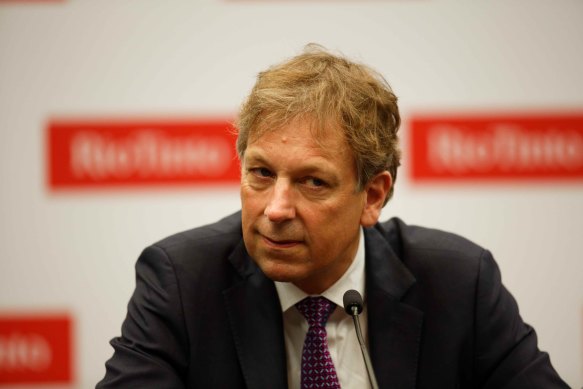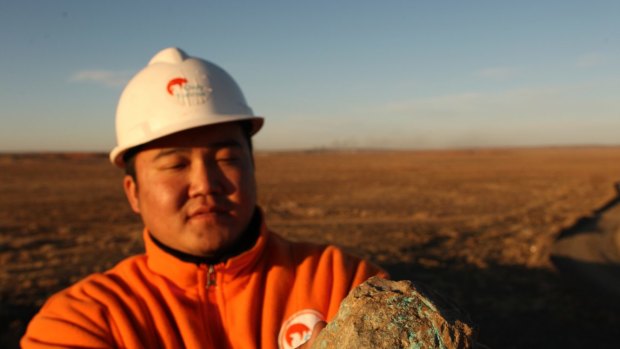This was published 2 years ago
Opinion
The difference between Serbia and Mongolia - one is in Rio’s court
Elizabeth Knight
Business columnistIt’s been a ten-year-long and difficult gestation, but Rio Tinto has finally given birth to a workable agreement with the Mongolian government to progress the massive $9.7 billion copper project, Oyu Tolgoi.
Glib as this might be, Rio can only be thankful that Mongolia is not home to an unvaccinated tennis star who was denied the opportunity to play in the Australian Open.

Rio chief executive Jakob Stausholm needed a win. He got one in MongoliaCredit: Trevor Collens
Last week and just days after Novak Djokovic was deported from Australia the Serbian government tore up Rio Tinto’s licences for a $3.3 billion lithium project.
The tennis star’s deportation seemed to be a straw for the Serbian government which is facing an election and a tide of public opposition to the lithium project’s environmental risks. The Serbian public appeared equally outraged by the Australian government’s treatment of its national tennis treasure.
No amount of Rio diplomacy or generous concessions could save its current relationship with Serbia - despite the fact that Rio chief executive Jakob Stausholm told the Sydney Morning Herald and The Age on Tuesday that he ‘remained hopeful’.
But Stausholm has plied his diplomatic skills and Rio’s hefty balance sheet to make peace with Mongolia.
This previously toxic relationship between Rio and the Mongolian government required serious concessions to convince the Mongolian parliament of its sovereign benefit.
Rio needed to either fire the money gun or risk the stalemate lasting for years.
This was achieved by Rio waiving the $3.3 billion loan it extended to the government and agreeing to ultimately have Mongolia supply the power to the project. (For its part Mongolia will allow Rio to continue its power supply deal with the Chinese in the short term.)
Stausholm clearly took the view that the negative impact these concessions will have on the returns from Oyu Tolgoi would be of lesser concern than abandoning the crucial underground stage of the project.
It’s a project that has been riven with discord, has experienced time and cost blowouts and geological issues and has been weeping sore for successive Rio managements.
Only a year ago Rio was threatening to pull out of the important underground mining element of the project unless concessions were granted by the Mongolian government.
But on Tuesday morning Stausholm was notching up one year in the job at Rio by sitting at Ulaanbaatar airport in Mongolia on his way to the Oyu Tolgoi site to meet with the prime minister, Oyun-Erdene Luvsannamsrai, for a ribbon cutting ceremony about which he said he was ‘super excited’.
While not all the bows have been tied on this deal – the most notable of which is tax treatment – the major obstacles have been overcome.

A worker holds a turquoise rock taken from the Oyu Tolgoi mine. Credit:
It wasn’t a one-man deal. It certainly helped that the chief executive of Rio’s copper division, Bold Baatar, is Mongolian born.
The deal ushers in a first major win for Stausholm whose more diplomatic and collegiate style sits in stark contrast to that of his predecessor, Jean Sebastien Jacques who left the company in the wake of Rio’s destruction of the culturally significant Juukan Gorge in Western Australia.
Although Juukan is a mess made by previous Rio regimes it will test Stausholm’s negotiation and compromise skills – and there is plenty left to do.
Sorting out Mongolia will be a welcome win for Rio Tinto – which has been battered by numerous issues – the most significant of which is weak annual output from its West Australian iron ore operations.
Greater focus on the management of Indigenous heritage issues has played into production, but Rio, like other West Australian producers, have also needed to deal with a COVID-19 related skills shortage and rain.
However, both BHP and Fortescue appear to have handled the pandemic’s challenges better and with less impact on production in their December quarters.
The Market Recap newsletter is a wrap of the day’s trading. Get it each weekday afternoon.